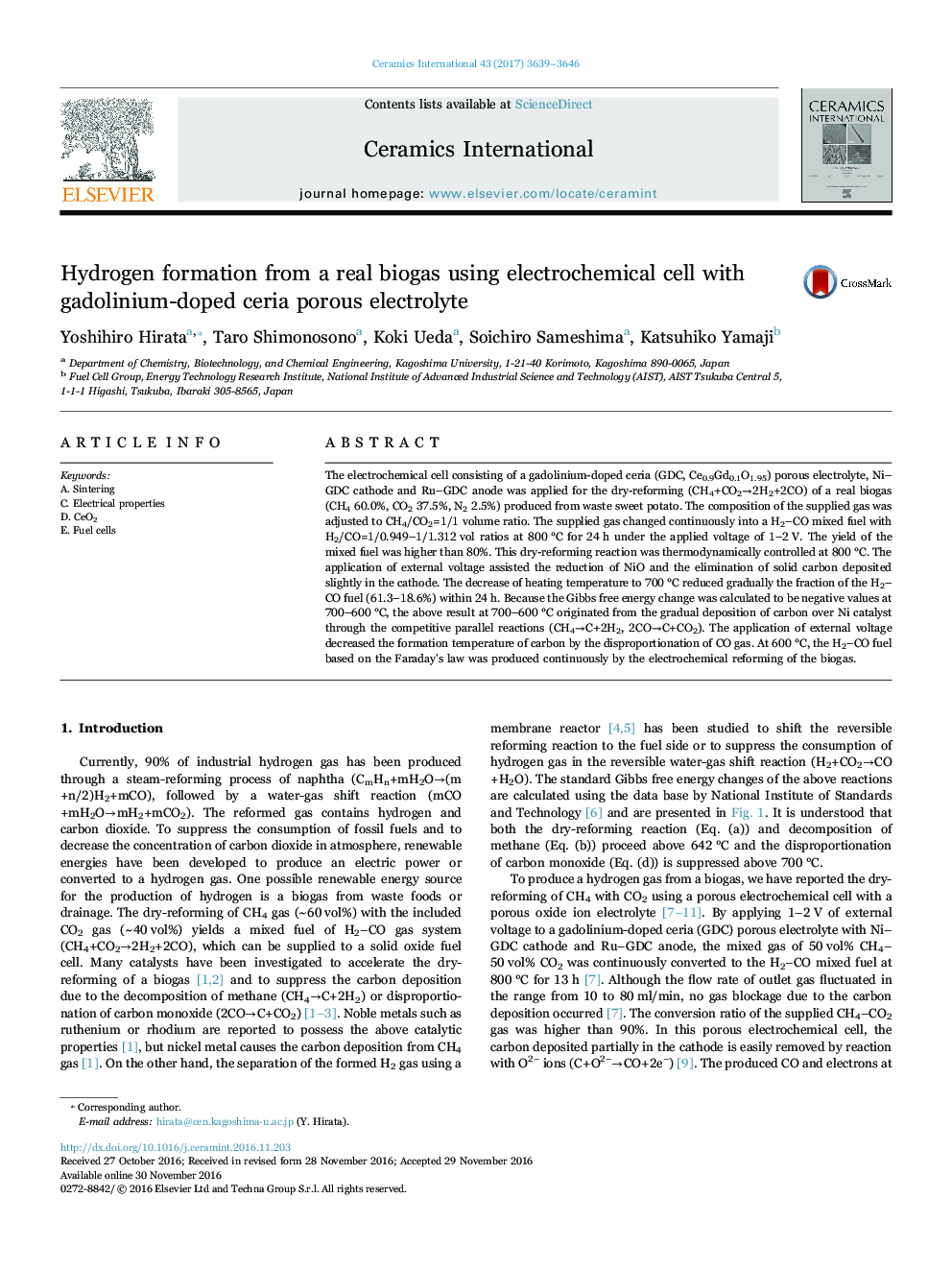| Article ID | Journal | Published Year | Pages | File Type |
|---|---|---|---|---|
| 5438912 | Ceramics International | 2017 | 8 Pages |
Abstract
The electrochemical cell consisting of a gadolinium-doped ceria (GDC, Ce0.9Gd0.1O1.95) porous electrolyte, Ni-GDC cathode and Ru-GDC anode was applied for the dry-reforming (CH4+CO2â2H2+2CO) of a real biogas (CH4 60.0%, CO2 37.5%, N2 2.5%) produced from waste sweet potato. The composition of the supplied gas was adjusted to CH4/CO2=1/1 volume ratio. The supplied gas changed continuously into a H2-CO mixed fuel with H2/CO=1/0.949-1/1.312 vol ratios at 800 °C for 24 h under the applied voltage of 1-2 V. The yield of the mixed fuel was higher than 80%. This dry-reforming reaction was thermodynamically controlled at 800 °C. The application of external voltage assisted the reduction of NiO and the elimination of solid carbon deposited slightly in the cathode. The decrease of heating temperature to 700 °C reduced gradually the fraction of the H2-CO fuel (61.3-18.6%) within 24 h. Because the Gibbs free energy change was calculated to be negative values at 700-600 °C, the above result at 700-600 °C originated from the gradual deposition of carbon over Ni catalyst through the competitive parallel reactions (CH4âC+2H2, 2COâC+CO2). The application of external voltage decreased the formation temperature of carbon by the disproportionation of CO gas. At 600 °C, the H2-CO fuel based on the Faraday's law was produced continuously by the electrochemical reforming of the biogas.
Related Topics
Physical Sciences and Engineering
Materials Science
Ceramics and Composites
Authors
Yoshihiro Hirata, Taro Shimonosono, Koki Ueda, Soichiro Sameshima, Katsuhiko Yamaji,
